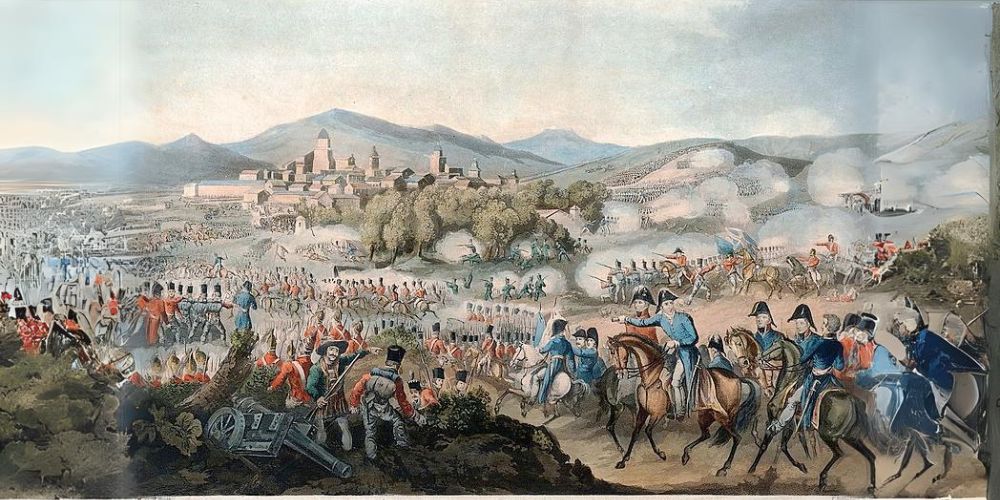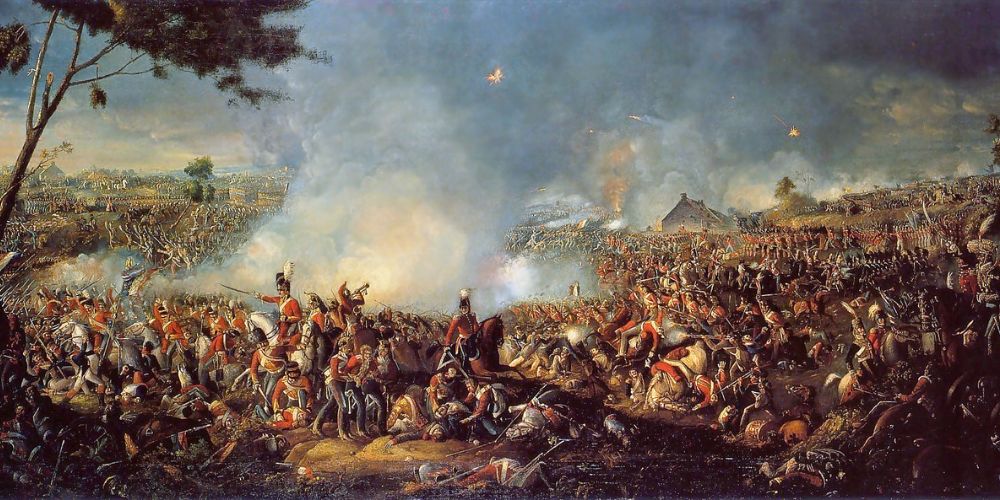
One of Britain’s most famous military figures was Arthur Wellesley, first Duke of Wellington. Born in Ireland in 1769, he is arguably most famous for leading the victory over Napoleon Bonaparte at the Battle of Waterloo in 1815. He went on to serve as Commander-in-Chief of the British Army and Prime Minister of Great Britain. Duke of Wellington nicknames included the ‘Iron Duke’. He died in 1852 at Walmer Castle in Kent.
Although Wellington’s victory over Napoleon Bonaparte at Waterloo is famous, the Iron Duke led an extraordinary life, full of many other political and military achievements. Here are ten facts about the Duke of Wellington that are not quite so well known.
1- Birth and early years of the Duke of Wellington, 1769-88

Arthur Wellesley was born in Dublin, the fifth son of an Irish nobleman in 1769.
He attended prep school in London and went on to study at Eton. He spent a year at military school in Angers in France before joining the British Army at 18 years old. Coincidentally, he was born in the same year as Napoleon Bonaparte, his longstanding military opponent.
2- Rapid rise through the ranks, 1793-1805
Thanks to the purchase of a number of commissions, along with a promising start to his military career, Arthur Wellesley became a lieutenant colonel of the 33rd Foot in 1793 at the age of 24 years old. An early success for the young officer was not only conquering rebellious Maratha chiefs in India between 1796 and 1805, but negotiating proficiently with them too, agreeing a number of treaties that ended the war between them and the British.
3- A knight and a viscount, 1805-09

Arthur Wellesley was honoured with a knighthood in 1805 on his return to England. He was sent back to Europe to fight Napoleon Bonaparte’s troops three years later, winning a notable victory on the Spanish peninsula. In 1809, he drove French forces occupying Porto in Portugal back into Spain. This achievement earned him the title of Viscount Wellington.
4- Napoleon’s nemesis, 1809-14

The new Viscount Wellington then spent five years keeping Napoleon’s generals away from the Iberian Peninsula. This was the military prowess that led to him becoming known as Arthur Wellesley 1st Duke of Wellington in 1814. It was also in that year that Napoleon abdicated as French emperor. He was sent into exile on the island of Elba under the terms of the treaty of Fontainebleau that he signed with Austria, Russia and Prussia.
5- Duke of Wellington and Napoleon Bonaparte once more, 1815
The new Duke of Wellington was appointed Britain’s ambassador to the restored French king in 1815. When Napoleon escaped Elba a few months later and entered Paris, Wellington returned to military service, leading combined forces from Britain, Holland, Belgium Germany and Prussia to stop his attempt to regain power in Europe.
Discover the Medallion: 1815 The Duke of Wellington and the entry of the British Army into Paris
6- Napoleon meets his Waterloo, 1815

Napoleon was finally defeated for good by a joint attack by Wellington’s forces and Prussian soldiers under the command of Field Marshal Blücher at the Battle of Waterloo in June 1815. He was captured and exiled once more, this time to the island of St Helena. This action put a stop to France’s attempts to dominate Europe and ended a war that had been raging for 23 years.
7- Wellington the politician, 1815-19
Reputation and popularity riding high following the victory at Waterloo, the Duke of Wellington served as Commander-in-Chief of the British army in occupied France until 1818. The following year he returned to England and entered politics, joining Lord Liverpool’s government as Master of the Ordnance.
8- Becoming Prime Minster – Twice! 1828-30, 1834

In 1828, he rose to the high office of Prime Minister, leading a Conservative government and overseeing Catholic emancipation in 1829. He served as Prime Minister until 1830, when his unpopular speech denouncing parliamentary reform forced him to resign. He had a brief second interim period in the role in 1834 while Sir Robert Peel was preparing to take over.
9- Warden of the Cinque Ports, 1829
1829 was also the year in which the Duke of Wellington was awarded the title of Warden of the Cinque Ports. The ‘cinque ports’ were five major ports located along England’s south coast: Sandwich, Hastings, Dover, Hythe and New Romney. The honour came with an official residence, Walmer Castle in Kent, which is now under the preservation of English Heritage.
Discover the Medallions: 1839 Duke of Wellington - Warden of the Cinque Ports & 1839 Duke of Wellington, Warden of the Cinque Ports
10- Later years and death, 1834-52

The Duke of Wellington remained in politics for a few years after Sir Robert Peel became Prime Minister. He was Foreign Secretary from 1834 to 1835 and then a Minister from 1841 until 1846. He eventually retired from political life in 1846 and lived quietly at Walmer Castle until his death in 1852 at the grand age of 83. The Duke of Wellington was buried in St Paul’s Cathedral next to Lord Horatio Nelson, fellow Napoleonic hero who died in 1805 at the Battle of Trafalgar.
Discover the Medallions: 1841 Duke of Wellington Historical Medallion by B Pistrucci
If you have enjoyed reading these Duke of Wellington facts, take a look at the Duke of Wellington medals available at Historical Medallions today.
